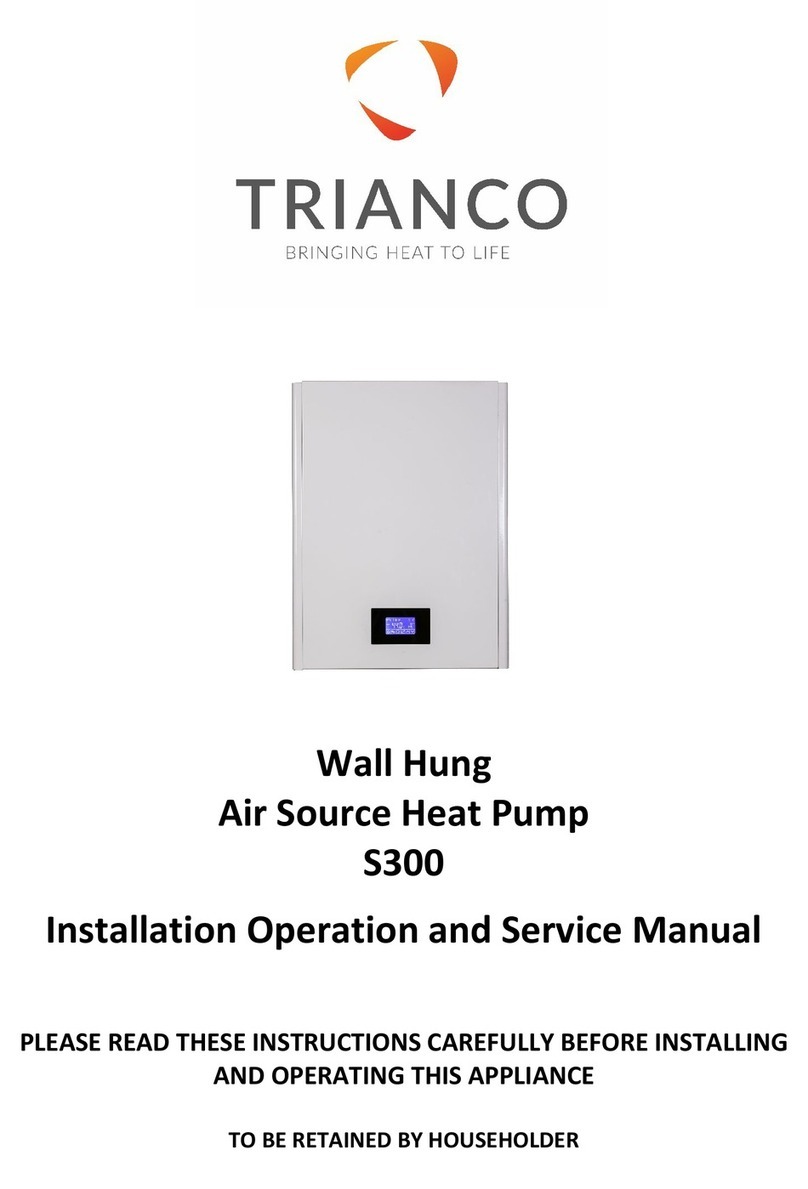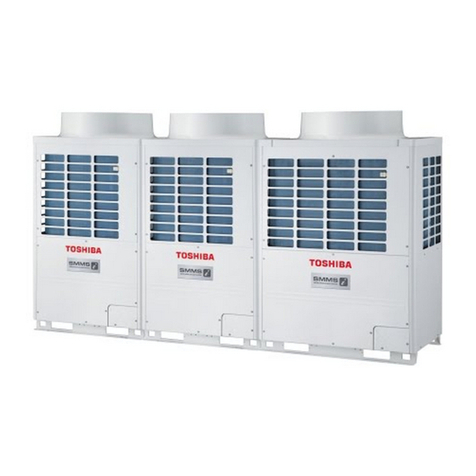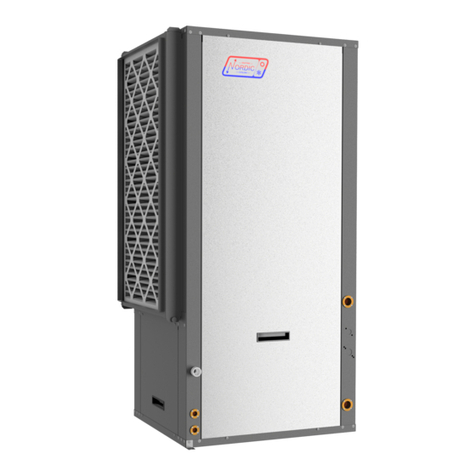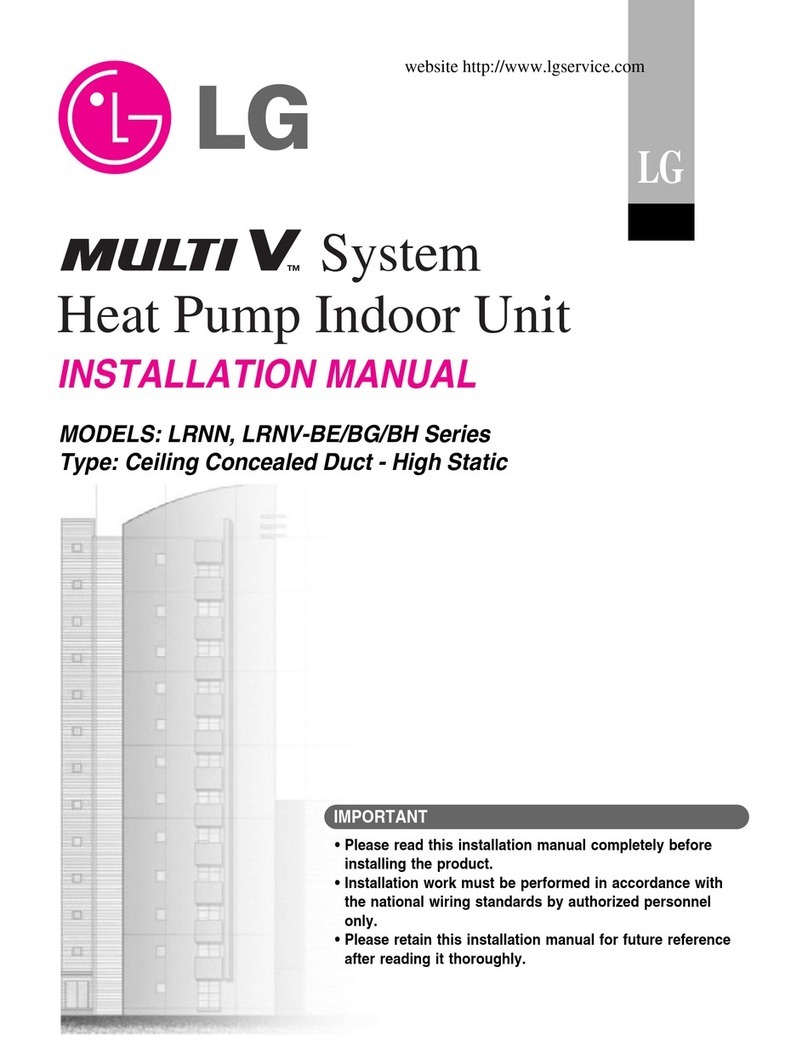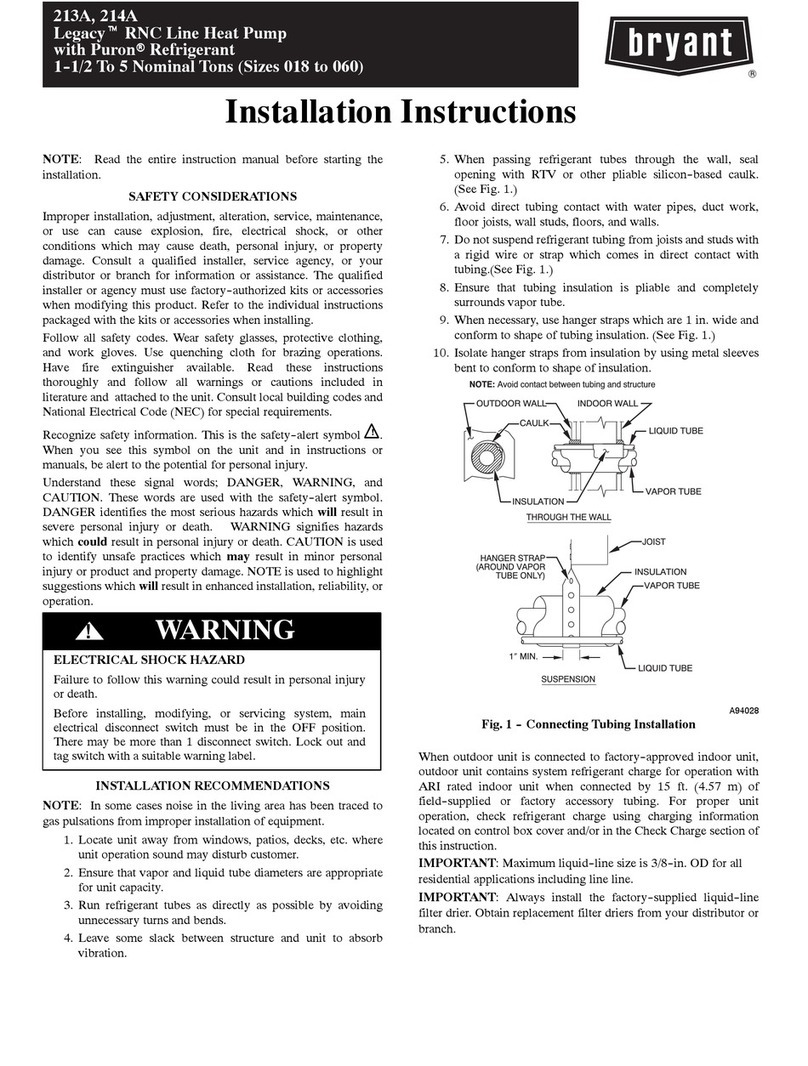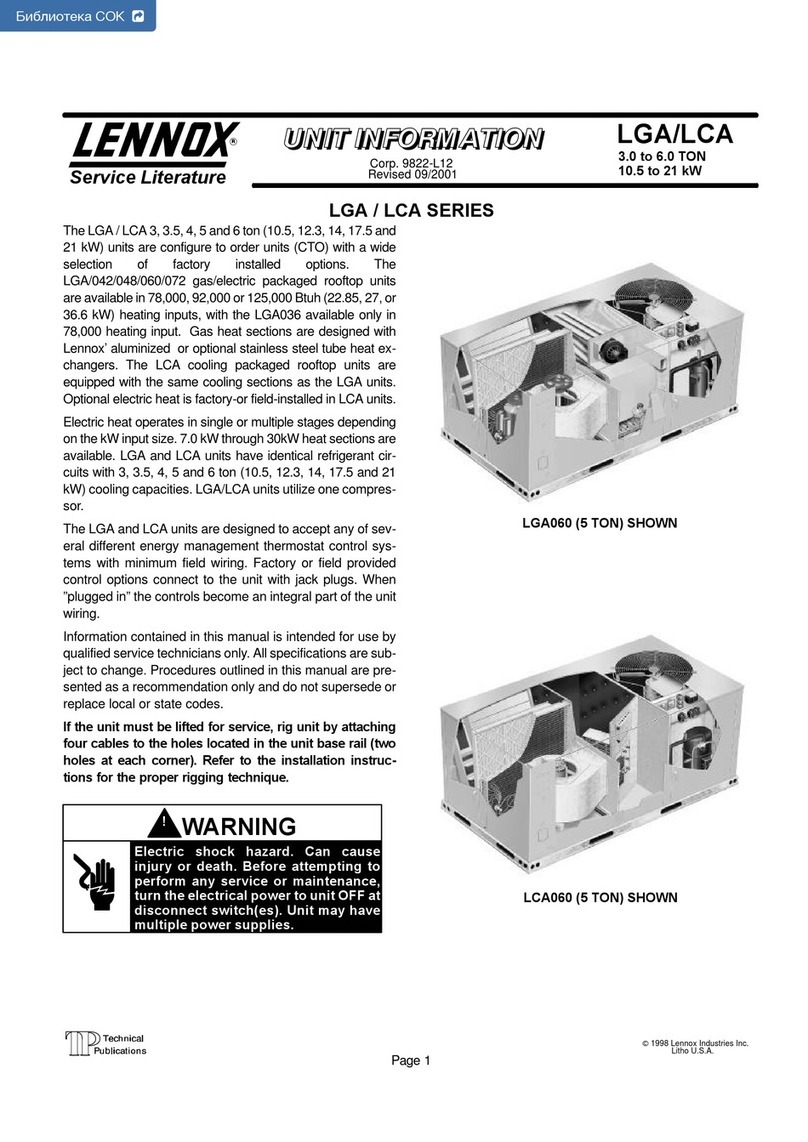Trianco S700 Manual

Air Source Heat Pump
S700, S1200
Installation and Service Manual

2
TABLE OF CONTENTS
Introduction…… …………………………………………………………………………………………………………………….
3
General information …………………………………………………………………………………………………………………………..3
Cycle diagram …….………….……………………….….………………………………………………………………………………………4
Safety precautions…….
…………………………………………………………………………………………….……………………..5
Warning ……………………………………………………………………………………………………………………………………………..5
Caution …………………………………………………………………………………………………………….………………………………6
Operating the unit…….
…………………………………………………………………………………………………………………….7
Features and function…………………………………………………………………………………………………………………………7
User interface ………….……………………………………………………….……………………………………………………………….7
Buttons…………………………………………………….…….………………….……………………………………….……………………..8
Controller operations…………………………………….…….………………….……………………………………….………………..8/9
Parameter checking and adjustment………….
……………………………………………………………………………….10
Unit status query table ……………………………………………………………………………………………………………………..10
Parameter list……………………………………………….…….………………….……………………………………….…………….....10
Error code table ……………………….…….………………….……………………………………….…………………………………...11
Wiring diagram
…………………………………………….…….………………….……………………………………….……………..12
Installation of the unit……….
……………………………………………………………………………………………………….…13
Installation guidelines ……………………………………………………………………………………………………………………….13
Precautions for selecting the location ……………………………………………………………………………………………….13
Selecting a location in cold climates ………………………………………………………………………………………………….13
Installation space ………………………………………………………………………………………………………………………………14
Mounting the unit ……………………………………………………………………………………………………………………………..14
Water pipe work ……………………………………………………………………………………………………………………………….15
Checking the water circuit …………………………………………………………………………………………………………………15
Connecting the water circuit ……………………………………………………………………………………………………………..15
Charging water ………………………………………………………………………………………………………………………………….16
Piping insulation ………………………………………………………………………………………………………………………………..16
Field wiring ………………………………………………………………………………………………………………………………………..16/17
Pre-operation Checks ………………………………………………………………………………………………………………………..17
Checks before initial start-up …………………………………………………………………………………………………………....17
Maintenance…..
………………………………………………………………………………………………………………….…………….17
Installation plan for complete system……………
………………………………………………….………….………………18
Trouble shooting………
………………………………………………………………………………………………………………………19
General guidelines ……………………………………………………………………………………………………………………………..19
Error codes and troubleshooting ………………………………………………………………………………………………………..20/21
After Sales service……………………………………………………………………………………………………………………………….22
Technical specification………………………………………………………………………………………………………………………..23
Heating Performance…………………………………………………………………………………………………………………………..23

3
INTRODUCTION
This manual includes the necessary information about the unit. Please read this manual carefully before you install,
operate, and maintain the unit.
By Fitting this Activair Air source Heat Pump, you agree:
The unit has been received in good condition.
You have carried out a heat loss calculation and are sure that this heat pump is suitable.
You have carried out a load and voltage test to determine the correct size of breaker to be used.
You meet the requirements of the appropriate Building Regulations
HEALTH AND SAFETY
INFORMATION FOR THE USER, INSTALLER AND SERVICE ENGINEER
Under the Consumer Protection Act 1987 and the Health and Safety at Work Act 1974, it is a requirement to provide
information on substances hazardous to health (COSHH Regulations 1998).
TR Engineering takes every reasonable care to ensure that its products are designed and constructed to meet these
safety requirements when the products are professionally installed and used. To fulfil the requirements, products
are comprehensively tested and examined before despatch.
When working on the appliance, it is the responsibility of the user or engineer to ensure that personal protective
clothing or equipment appropriate to parts that could be considered hazardous or harmful is worn.
This appliance may contain some of the items below:
Glass rope, mineral wool, insulation pads, ceramic fibre, and glass insulation.
When handling, avoid inhalation and contact with eyes. These may be harmful and cause irritation to the skin, eyes,
nose, or throat. Use disposable gloves, face masks and eye protection.
After handling, wash hands and other exposed areas. When disposing of materials, limit dust and the risk of
inhalation by using water spray. Ensure materials are securely wrapped.
Seek urgent medical attention if inhaled or ingested. Exposure to eyes and skin should be followed by immediate
cleansing of the affected areas and medical attention if necessary.
Glues, Sealants and Paints
The glues, sealants and paints used present no known hazards when the appliance is used in the manner for which it
is intended.
TEST SPECIFICATION
EN 14825:2018
EN 14511 – 4:2018 Clause 4

4
Cycle diagram
The whole cycle diagram is shown below.

5
SAFETY PRECAUTIONS
To prevent injury to the user, other people, or property damage, the following instructions must be followed.
Incorrect operation due to ignoring of instructions may cause harm or damage.
Install the unit only when it complies with local regulations, by-laws, and standards. Check the main voltage and
frequency. This unit is only suitable for earthed sockets.
The following safety precautions should always be considered:
- Be sure to read the following WARNING before installing the unit.
- Be sure to observe the cautions specified here as they include important items related to safety.
- After reading these instructions, be sure to keep it together with the manual in a handy place for future
reference.
Only to be installed by a professional person.
Incorrect installation could cause injury due to fire, electric shock, the unit falling or leakage of water. Consult the
dealer from whom you purchased the unit or a specialized installer.
Install the unit securely in a place.
When insufficiently installed, the unit could fall causing injury. When installing the unit in a small room, please take
measures (like sufficient ventilation) to prevent the asphyxia caused by the leakage of refrigerant.
Use the specified electrical wires and attach the wires firmly to the terminal board (connection in such a way that
the stress of the wires is not applied to the sections).
Incorrect connection and fixing could cause a fire.
Be sure to use the provided or specified parts for the installation work.
The use of defective parts could cause an injury due to fire, electric shocks, the unit falling etc.
Perform the installation securely and please refer to the installation instructions.
Incorrect installation could cause an injury due to fire, electric shocks, the unit falling, leakage of water etc.
Perform electrical work according to the installation manual and be sure to use a dedicated section.
If the capacity of the power circuit is insufficient or there is an incomplete electrical circuit, it could result in a fire or
an electric shock.
The unit must always have an earthed connection.
If the power supply is not earthed, you may not connect the unit.
Never use an extension cable to connect the unit to the electric power supply.
If there is no suitable, earthed wall socket available, have one installed by a recognized electrician.
Do not move/repair the unit yourself.
Improper movement or repair on the unit could lead to water leakage, electrical shock, injury, or fire. Have any
repairs and/or maintenance only carried out by a recognized service engineer.
Do not plug or unplug the power supply during operation
There is a risk of fire or an electric shock
Do not touch/operate the unit with wet hands
There is a risk of fire or an electric shock

6
Do not place a heater or other appliances near the power cable
There is a risk of fire or an electric shock
Be cautious that water could not be poured into the product directly, do not allow water to run into electric parts
There is a risk of fire or an electric shock
If the supply cord is damaged, it must be replaced by the manufacturer or its service agent or a similarly qualified
person to avoid a hazard.
This appliance has not been designed for use by persons (including children) with reduced physical, sensorial, or
mental faculties or by persons without any experience or knowledge of heating systems, unless they act under the
safety and supervision of a responsible person or have received prior training concerning the use of the appliance.
Children should be supervised to ensure that they do not play with the appliance
IF THE PRODUCT IS NOT TO BE USED FOR AN EXTENDED PERIOD OF TIME, WE STRONGLY RECOMMEND NOT
TO SWITCH ‘OFF’ THE POWER SUPPLY OF THE UNIT.
IF THE POWER IS NOT SUPPLIED, THE ANTI-FREEZE FUNCTION WILL NOT BE PERFORMED.
Do not install the unit in a place where there is a chance of flammable gas leaks.
If there is a gas leak and gas accumulates in the area surrounding the unit, it could cause an explosion.
Perform the drainage/piping work according to the installation instruction.
If there is a defect in the drainage/piping work, water could leak from the unit and household goods could get wet
and be damaged.
Do not clean the unit when the power is ‘on.’
Always shut ‘off’ the power when cleaning or servicing the unit. If not, it could cause an injury due to the high-speed
running fan or an electrical shock.
Do not continue to run the unit when there is a suspected fault.
The power supply needs to be shut ‘off’ to stop the unit; otherwise, this may cause an electrical shock or fire.
Be cautious when unpacking and installing the product.
Sharp edges could cause injury. Especially watch the edges and the fins on the heat exchanger of the product.
Always check for gas (refrigerant) leakage after installation or repair of product.
Low refrigerant levels may cause failure of the product.
Keep level even when installing the product.
This is to avoid vibration or water leakage.
Do not place hands or fingers or others into the fan, or evaporator.
The ventilator runs at high speed, this could cause significant injury.

7
OPERATING THE UNIT
Operating the unit comes down to operating the digital controller.
NEVER LET THE DIGITAL CONTROLLER GET WET. THIS MAY CAUSE AN ELECTRIC SHOCK OR FIRE.
NEVER PRESS THE BUTTONS OF THE DIGITAL CONTROLLER WITH A HARD, POINTED OBJECT.
THIS MAY DAMAGE THE DIGITAL CONTROLLER.
NEVER INSPECT OR SERVICE THE DIGITAL CONTROLLER YOURSELF, ASK A QUALIFIED SERVICE
PERSON TO DO THIS.
Features and functions
Basic controller functions
The basic controller functions are:
Turning the heat pump ‘ON’/’OFF’.
24 hours real time clock.
Timer ‘ON’ and timer ‘OFF’.
Parameter adjustment
User interface
Buttons
Unit ON/OFF button
Under unit unlock status, press this button for 1 second to switch unit ON/OFF.
Under other setting status, press this button to return to main interface.
Under locked screen status, press this button for 5 seconds to unlock screen.
Timer
Unit
‘
O
N/O
FF
’
button
Mode button
UP button
DOWN button

8
Mode button
Under main interface, press this button to check unit status
and adjust button
Turn pages up and down to check, modify parameters.
Combining with to query and change parameters.
Under unit ON status, press and to set temperature in current mode.
Timer button
Press this button for 10 seconds to set clock.
Press this button to enter Timer ON/OFF setting mode, combing with and buttons to
set 2 groups of Timer ON/OFF.
Controller operations
Parameter query and settings
User parameter query and settings (available when unit ON or OFF).
On main interface screen, press for 3 seconds to enter user parameter query interface, press
and buttons to check each parameter.
On user parameter query interface, press to enter parameter setting interface, press and
buttons to modify parameter value, press again to go back to parameter query status.
Under user parameter query or setting interface, if buttons are not pressed within 30 seconds, user
parameter query or setting interface will automatically exit and return to main operation interface.
can be pressed to go back to main operation interface.
Clock settings
Under main operation interface screen, press for 5 seconds to enter clock setting interface.
On clock setting interface screen, press on time, the “hour” digit is flashing, then press
and buttons to modify value for “hour.”
After setting “hour” digit, press again, the “minute” digit is flashing, then press and
buttons to modify value for “minute.”
After setting “minute” digit, press again to confirm clock settings and go back to main operation
interface.
Under clock setting interface, if buttons are not pressed within 30 seconds, display will automatically
confirm current clock settings and go back to main operation interface.
Under clock setting interface, press to confirm clock settings and go back to main operation
interface.

9
Timer settings
On main operation interface screen, press to enter Timer setting interface.
Then press and to set Timers, there are 4 groups of Timers.
When Time 1 is flashing, press to enter Timer 1 ON “hour” digit setting which will flash, then
press and buttons to set value for “hour” digit.
After setting Timer 1 ON “hour” digit, press again to enter into Timer 1 ON “minute” digit which
will flash, then press and buttons to set value for Time 1 ON “minute” digit.
After setting Timer 1 ON “minute” digit, press again to enter into Timer 1 OFF “hour” digit,
The setting way is same as above.
When finish setting Timer OFF time, press again to confirm current Timer settings, and enter
Timer 2 ON/OFF settings, the operation is same as Timer 1 settings, then back to main operation
interface.
On Timer setting interface screen, press for 5 seconds to cancel current Timer ON/OFF settings.
On Timer setting interface screen, if there is no press on any button for continuous 30 seconds, system
will automatically confirm current Timer settings and return to main operation interface (Timer
memory is available if power off.).
On Timer setting interface screen, press to confirm current Timer settings and back to main
operation interface.
Settings way for other groups of Timers is same as Timer 1.
Timer 1,2 are for unit ON/OFF, Timer 3 is for return water, Timer 4 is for water refilling.
Lock and unlock buttons
Under locked button status, press for 3 seconds, after a buzzer, button will be unlocked.
Automatically lock buttons if there is no press on any button within 60 seconds.
Cooling mode
Press for 5 seconds, can switch different modes: cooling, heating/hot water.
Forced defrosting
Under unit ON status, press for 3 seconds to enter forced defrosting.
Press for longer time till unit turns off, 3 minutes later the forced defrosting will exit.
Or if defrosting time reaches Parameter “H5”, the forced defrosting will exit as well.
Remove error history record
On error history query interface screen, press and for 5 seconds to remove error history
records.
Reset
Under unit OFF status, press and for 5 seconds, parameters will resume initial factory
default value.

10
PARAMETER CHECKING AND ADUSTMENT
Unit status query table
Parameter list
Some parameters can be checked and adjusted by the controller. Below is the parameter list.
User parameters (can be adjusted by users.)
Code
Pa
rameter Name
Range
Default
L2 Outlet water temperature variation
for compressor start
3
℃~
18
℃
5℃
L3 Outlet water temperature set
when heating 32℃
~
40℃
Parameter F1
40℃
L4 Outlet water temperature set
when cooling
8-32℃ 12℃
L5 Ambient temperature for
electric heater
start
0
℃~
35
℃
5℃
L6 Return water temperature 30℃
~
40℃ 40℃
L7
Allowable water
-
refill
temperature
20℃
~
40℃ 20
℃
L8 Compressor current 0
~
40A 0
(
”0” means no detection
)
Code
Parameter Name
A1
Coil
temperature
A2
Return gas
temperature
A3
Exhaust gas
temperature
A4
Ambient
temperature
A5
Outlet water
temperature
A6
Ret
urn water
temperature
A7
Reser
v
e
d
A8
Compre
ssor current
A9
O
pening of the EEV
A10
Reserved
E1
~
E6
Error code display

11
Error code table
When an error occurs or the protection mode is set automatically, the wired controller will display the error message.
Code
Protection/Failure Type
Code
Protection/Malfunction
Er01
Phase dislocation
Er23
Low outlet water
temperature
protection
under cooling mode
Er02
Phase loss
Er25
Water level switch failure
Er03 Water flow switch failure Er27 Outlet water temperature sensor failure
Er04 Anti-freeze protection in winter Er29 Compressor suction gas temperature
sensor
failure
Er05 High pressure protection Er31 Water pressure switch failure
Er06
Low pressure
protection
Er35
Compressor
hig
h curre
n
t pr
otection
Er09
Communicat
ion
failure
Er44
Low ambient temperature protection
Er12 High compressor exhaust gas
temp protection
Er45 High outlet water temperature protection
under h
eat mode
Er15
Tank
water
temp sensor failure
Er16
Coil
temp
erature
sensor failur
e
Er18 Exhaust gas temp
se
nsor failure
Er21
Ambient temp
sensor failure
Er22 Return water temperature sensor
failure

12
WIRING DIRGRAM
TRAN-PR1
N
N1
R
S
T
TRAN-SEC

13
INSTALLATION OF THE UNIT
Installation guidelines
Precautions for selecting the location
1. Choose a place solid enough to bear the weight and vibration of the unit, where the operation noise will not be
amplified.
2. Choose a location where the hot air discharged from the unit, or the operation noise will not cause a nuisance to
the neighbours of the user.
3. Avoid places near a bedroom and the like, so that the operation noise will cause no trouble.
4. There must be sufficient space for carrying the unit into and out of the site.
5. There must be sufficient space for air passage and no obstructions around the air inlet and the air outlet.
6. Locate the unit so that the noise and the discharged hot air will not annoy others.
7. The site must be free from the possibility of flammable gas leakage in a nearby place.
8. Install units, power cords and inter-unit cables at least 3m away from television and radio sets. This is to prevent
interference to images and sounds.
9. Depending on radio wave conditions, electromagnetic interference can still occur even if installed more that 3m
away.
10. In coastal areas or other places with salty atmosphere of sulphate gas, corrosion may shorten the life of the
outdoor unit.
11. Since drain flows out of the outdoor unit, do not place anything under the unit which must be kept away from
moisture.
Selecting a location in cold climates
WHEN OPERATING THE OUTDOOR UNIT IN A LOW OUTDOOR AMBIENT TEMPERATURE, BE SURE TO FOLLOW
THE INSTRUCTIONS DESCRIBED BELOW.
To prevent exposure to wind, install the outdoor unit with its suction side facing the wall.
Never install the outdoor unit at a site where the suction side may be exposed directly to wind.
To prevent exposure to wind, install a baffle plate on the air discharge side of the outdoor unit.
In heavy snowfall areas it is very important to select an installation site where the snow will not affect the
unit. If lateral snowfall is possible, make sure that the heat exchanger coil is not affected by the snow (if
necessary, construct a lateral canopy).

14
Installation space
Mounting the unit
When installing the outdoor unit, please refer to “MCS Installation guidelines” to select an appropriate location.
1. Check the strength and level of the installation ground so that the unit will not cause any operating vibration or
noise after installation.
2. Prepare 4 sets of M8 foundation bolts, nuts, and washers each.
3. Fix the unit securely by means of the foundation bolts in accordance with the foundation drawing. It is best to
screw in the foundation bolts until their length remains 20mm above the foundation surface.

15
Water pipework
Checking the water circuit
The water circuits must be installed by a licensed technician and must comply with all current regulations.
THE UNIT IS ONLY TO BE USED IN A CLOSED WATER SYSTEM. APPLICATION IN AN OPEN WATER CIRCUIT CAN
LEAD TO EXCESSIVE CORROSION OF THE WATER PIPING.
Before continuing the installation of the unit, check the following points:
The maximum water pressure is 6 bar.
Two isolation valves (not supplied) must be fitted to facilitate service and maintenance, please install one at
each water inlet/outlet. Orientation of the integrated drain and fill valves is important for servicing.
Drain taps must be provided at all low points of the system to permit complete drainage of the circuit during
maintenance.
Air vents must be provided at all high points of the system. The vents should be located at points which are
easily accessible for servicing. Do the air purge during the installation. Pls refer to the illustration on page 3
Take care that the components installed in the field piping can withstand the water pressure.
Connecting the water circuit
Water connections must be made in accordance with the diagram delivered with the unit, respecting the water inlet
and outlet connections.
BE CAREFUL NOT TO DEFORM THE UNIT PIPING BY USING EXCESSIVE FORCE WHEN CONNECTING THE PIPING.
DEFORMATION OF THE PIPING CAN CAUSE THE UNIT TO MALFUNCTION.
If air, moisture, or dust gets in the water circuit, problems may occur.
Therefore, always consider the following when connecting the water circuit:
Use clean pipes only.
Hold the pipe end downwards when removing burrs.
Cover the pipe end when inserting it through a wall so that no dust and dirt can enter.
Use a good thread sealant for the sealing of the connections.
The sealing must be able to withstand the pressures and temperatures of the system.
When using non-brass metallic piping, make sure to insulate both materials from each other to prevent
galvanic corrosion.
Because brass is a soft material, use appropriate tooling for connecting the water circuit. Inappropriate
tooling will cause damage to the pipes.
THE UNIT IS ONLY TO BE USED IN A CLOSED WATER SYSTEM. APPLICATION IN AN OPEN WATER CIRCUIT CAN
LEAD TO EXCESSIVE CORROSION OF THE WATER PIPING.
NEVER USE ZN-COATED PARTS IN THE WATER CIRCUIT. EXCESSIVE CORROSION OF THESE PARTS MAY OCCUR AS
COPPER PIPING IS USED IN THE INTERNAL WATER CIRCUIT OF THE UNIT.
WHEN USING A 3-WAY VALVE OR A 2-WAY VALVE IN THE WATER CIRCUIT.
THE RECOMMENDED MAXIMUM CHANGEOVER TIME OF THE VALVE SHOULD BE LESS THAN 60
SECONDS.

16
Charging water
1. Connect the water supply to a drain and fill valve.
NOTE
Water quality must be according to EN directive 98/83 EC.
Piping insulation
The complete water circuit, inclusive all piping, must be insulated to prevent and reduction of the heating capacity.
Field wiring
WARNING
A main switch or other means for disconnection, having a contact separation in all poles, must be
incorporated in the fixed wiring in accordance with relevant local and national legislation.
Switch ‘off’ the power supply before making any connections.
All field wiring and components must be installed by a licensed electrician and must comply with relevant
European and national regulations.
The field wiring must be carried out in accordance with the wiring diagram supplied with the unit and the
instructions given below.
Be sure to use a dedicated power supply. Never use a power supply shared by another appliance.
Be sure to establish an earth. Do not earth the unit to a utility pipe, surge absorber, or telephone earth.
Incomplete earth may cause electrical shock.
Be sure to install an earth leakage protector.
Failure to do so may cause electrical shock.

17
Pre-operation checks
Checks before initial start-up
SWITCH OFF THE POWER SUPPLY BEFORE MAKING ANY CONNECTIONS.
After the installation of the unit, check the following before switching on the circuit breaker:
1. Field wiring
Make sure that the field wiring between the local supply panel and domestic hot water tank has been carried
out according to the instructions, according to the wiring diagrams and according to European and national
regulations.
2. Fuses or protection devices
Check that the fuses or the locally installed protection devices are of the size and type specified. Make sure that
neither a fuse nor a protection device has been by-passed.
3. Earth wiring
Make sure that the earth wires have been connected properly and that the earth terminals are tightened.
4. Internal wiring
Visually check the switch box on loose connections or damaged electrical components.
5. Fixation
Check that the unit is properly fixed, to avoid abnormal noises and vibrations when starting up the unit.
6. Damaged equipment
Check the inside of the unit on damaged components or squeezed pipes.
7. Refrigerant leakage
Check the inside of the unit on refrigerant leakage. If there is a refrigerant leak, call your local dealer.
8. Power supply voltage
Check the power supply voltage on the local supply panel. The voltage must correspond to the voltage on the
identification label of the unit.
9. Water flow switch should be installed for the place where there is no constant sufficient water flow (Field supply)
10. Stop valves
Make sure that the stop valves are correctly installed and fully open.
OPERATING THE SYSTEM WITH CLOSED VALVES WILL DAMAGE THE PUMP!
MAINTENANCE
To ensure optimal availability of the unit, a number of checks and inspections on the unit and the field wiring must
be carried out at regular intervals.
BEFORE CARRYING OUT ANY MAINTENANCE OR REPAIR ACTIVITY, ALWAYS SWITCH ‘OFF’ THE CIRCUIT
BREAKER ON THE SUPPLY PANEL, REMOVE THE FUSES OR OPEN THE PROTECTION DEVICES OF THE UNIT.
MAKE SURE THAT BEFORE STARTING ANY MAINTENANCE OR REPAIR ACTIVITIES THE POWER SUPPLY TO
THE OUTDOOR UNIT IS SWITCHED ‘OFF’.

18
INSTALLATION PLAN EXAMPLE FOR COMPLETE SYSTEM
WIRING EXAMPLE
4 5 6 7
HTGHW
Room
Stat
Cylinder
Stat
321
230V
50Hz
L N E
230V
50Hz
L N E
L N
Programmer

19
TROUBLESHOOTING
This section provides useful information for diagnosing and correcting certain issues which may occur.
General guidelines
Before starting the troubleshooting procedure, conduct a thorough visual inspection of the unit and look for obvious
defects such as loose connections or defective wiring.
Before contacting your local dealer, read this chapter carefully, it will save you time and money.
WHEN CONDUCTING AN INSPECTION ON THE SWITCH BOX OF THE UNIT, ALWAYS MAKE SURE THAT THE MAIN
SWITCH OF THE UNIT IS SWITCHED ‘OFF.’
When a safety device was activated, stop the unit, and find out why the safety device was activated before resetting
it. Under no circumstances safety devices may be bridged or changed to a value other than the factory setting. If the
cause of the problem cannot be found, call your local dealer/installer.

20
Error codes and Troubleshooting
When an error occurs or the protection mode is set automatically, the wired controller will display the error message.
Protection/
Malfunction
Error code
Reasons
Co
r
rection Mode
Phase Dislocation Er01 Wrong connection of live
wire
Reverse position of two of the
live wires (3-Phase only).
Phase Loss Er02 Live wire loose, or without
power.
1)
Check if wires are loose.
2)
Check if any phase is without
power (use a multimeter to check
voltage).
Water flow switch
failure
Er03
1)
Inadequate water flow
2)
Water flow switch dam-
aged
3)
Main PCB damaged
1)
Check the pump
2)
Replace the water flow
switch
3)
Replace the PCB
Anti-freeze
protection in
winter
Er04 This function occurs when
ambient temperature is too low.
No action needed
High pressure
protection
Er05
1)
Inadequate flow rate
2)
Uncompressed gas in
refrigerant system
3)
Overcharge with
refrigerant
4)
Water temperature
setting too high
5)
Outdoor fan ventilation is
bad
6)
Poor connection of pressure
switch
7)
Pressure switch failure
8)
Main PCB damaged
1)
Check pump and water
control valve
2)
Discharge and then re-
charge the refrigerant
3)
Discharge some
refrigerant
4)
Set lower water temp
5)
Check fan ventilation
6)
Reconnect the switch
7)
Replace the pressure
switch
8)
Replace the PCB
Low pressure
protection
Er06
1)
Undercharged refrigerant
2)
Capillary or EEV blocked
3)
Poor connection of pressure
switch
4)
Pressure switch failure
5)
Main PCB damaged
1)
Add some refrigerant
2)
Replace the capillary or EEV
3)
Reconnect the switch
4)
Replace the pressure
switch
5)
Replace the PCB
Communication failure Er09 Communication failure be-
tween the LCD and PCB
1)
Check the wire connection
between the LCD and PCB.
2)
Replace LCD.
High compressor
exhaust gas
temperature
protection
Er12
1)
Refrigerant Under-
charged
2)
Reasons as Er05
1)
Add some refrigerant
2)
Similar corrections as Er05
Tank water
temperature sensor
failure
Er15
1)
Sensor open circuit
2)
Sensor short circuit
3)
Main PCB damaged
1)
Check the sensor
connection
2)
Replace the sensor
3)
Replace the main PCB
Coil temperature
sensor failure
Er16
1)
Sensor open circuit
2)
Sensor short circuit
3)
Main PCB damaged
1)
Check the sensor
connection
2)
Replace the sensor
3)
Replace the main PCB
This manual suits for next models
1
Table of contents
Other Trianco Heat Pump manuals
Popular Heat Pump manuals by other brands
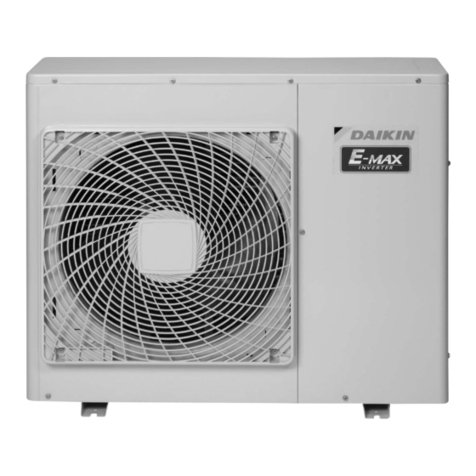
Daikin
Daikin 4MXS100EV2C Service manual
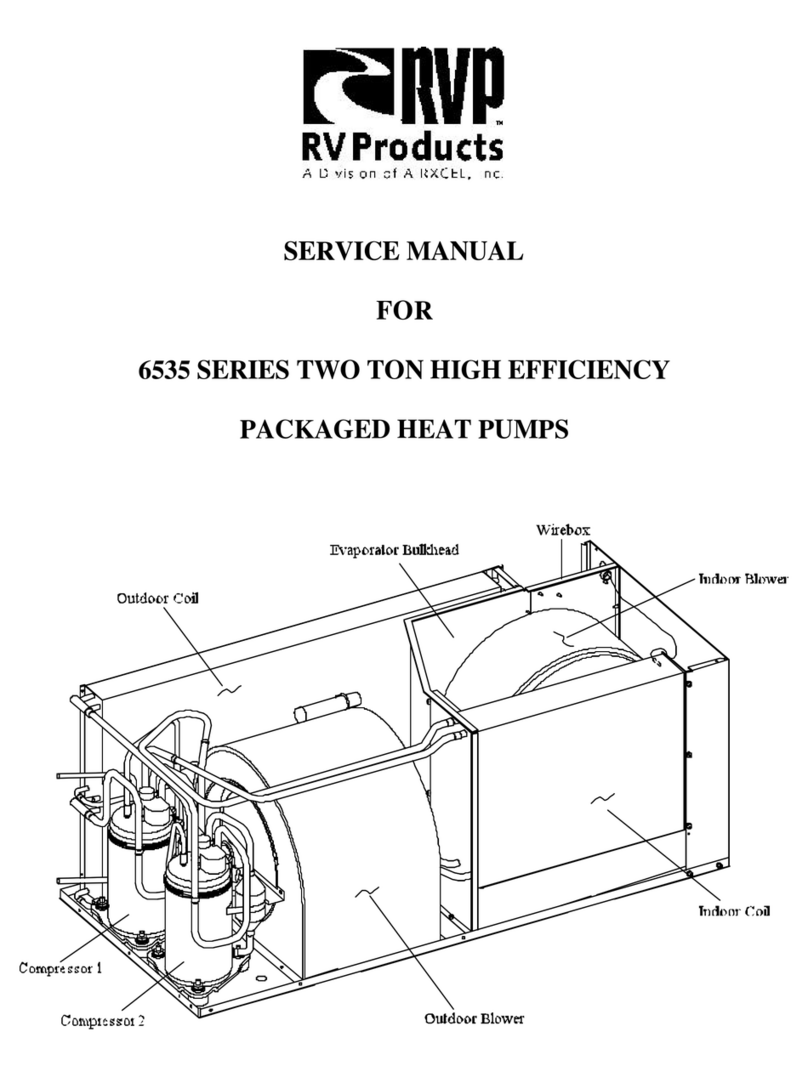
RV Products
RV Products 6535 SERIES Service manual

Viessmann
Viessmann VITOCAL 300-G manual

SOLARFOCUS
SOLARFOCUS Vampair Operation manual
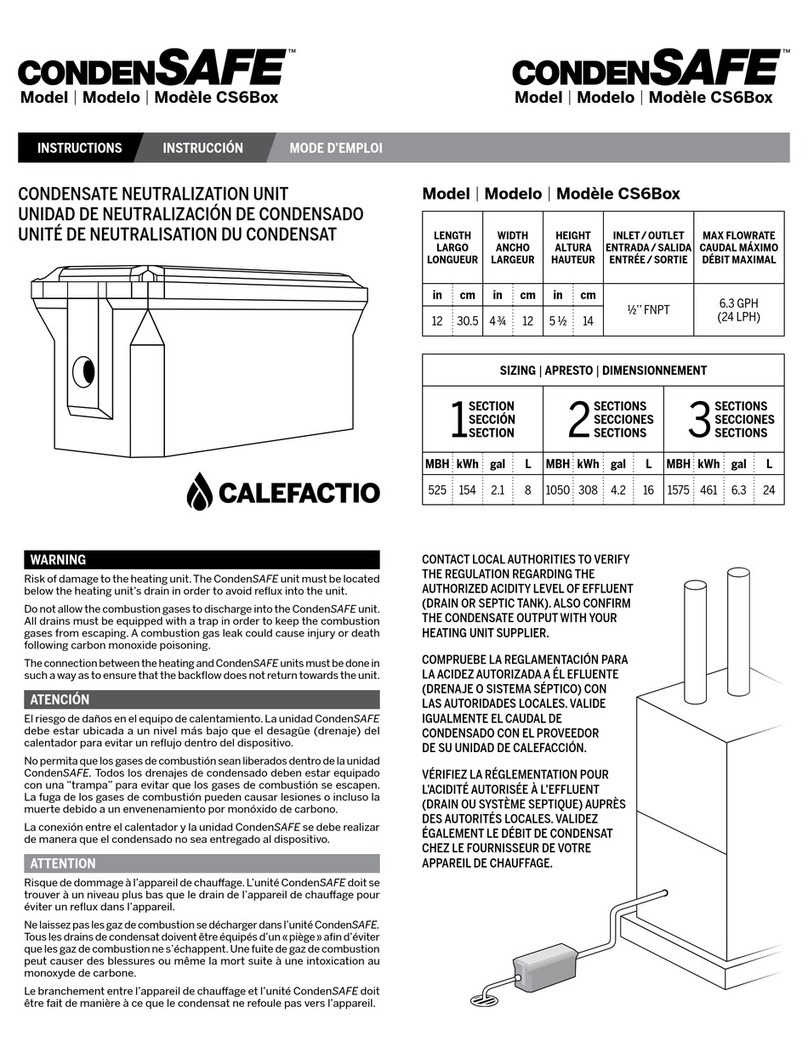
CALEFACTIO
CALEFACTIO CONDENSAFE CS6Box instructions
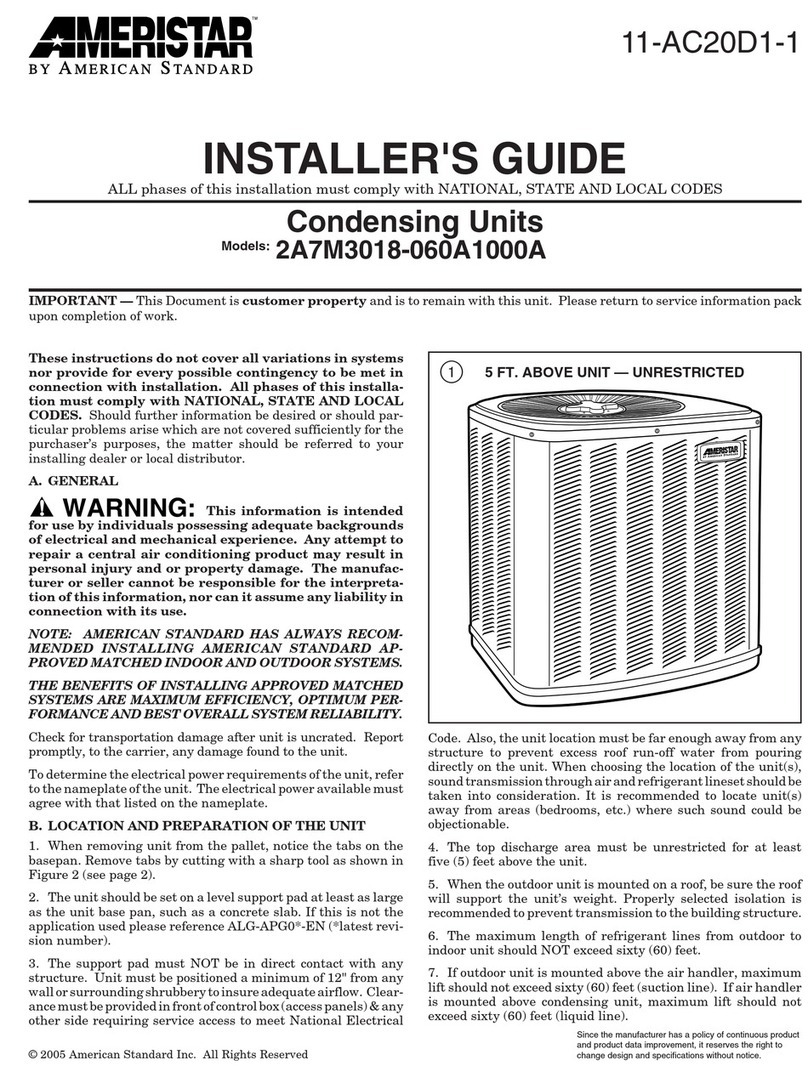
American Standard
American Standard Ameristar 2A7M3018-060A1000A Installer's guide

Emerson
Emerson COPELAND ZX Series user manual

Mitsubishi Electric
Mitsubishi Electric PUZ-WM50VHA Service manual
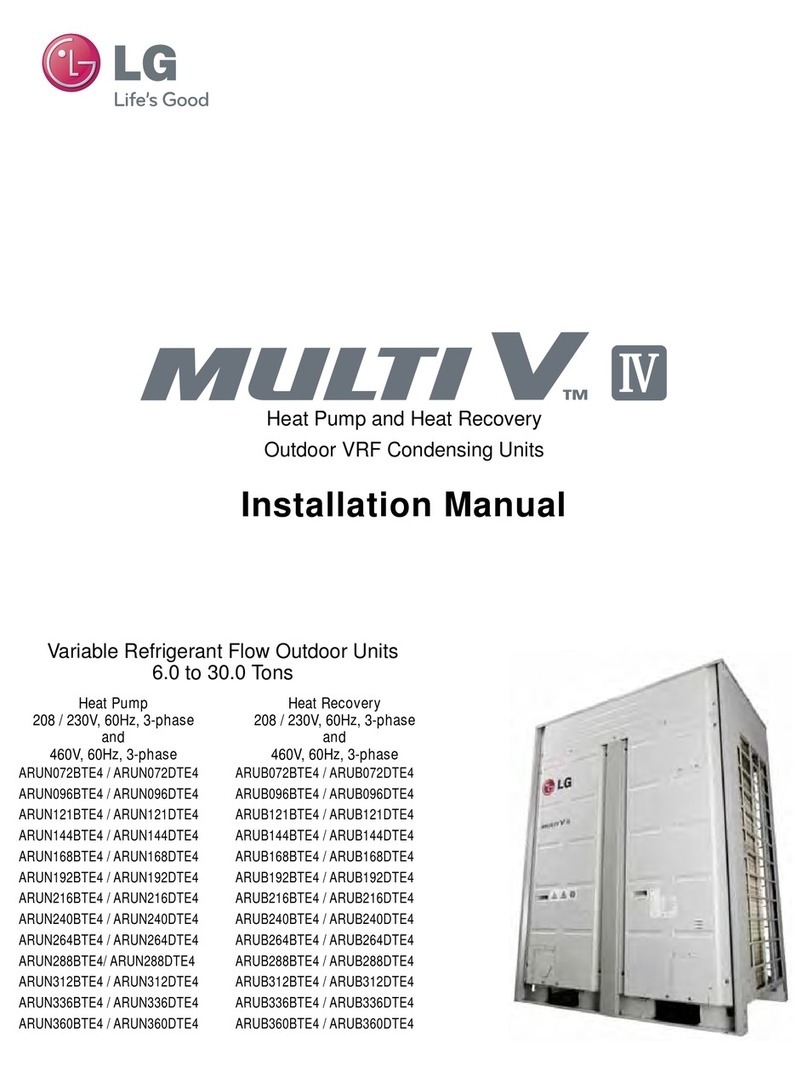
LG
LG MULTI V ARUN072BTE4 installation manual
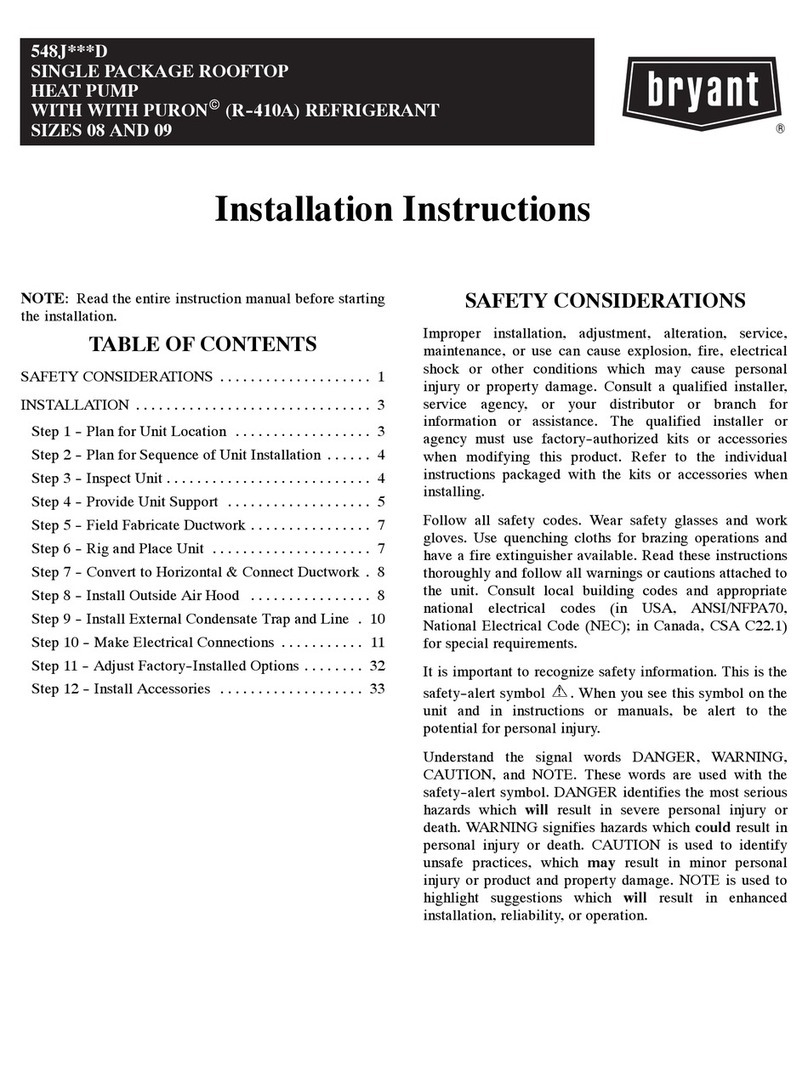
Bryant
Bryant 548J*D Series installation instructions
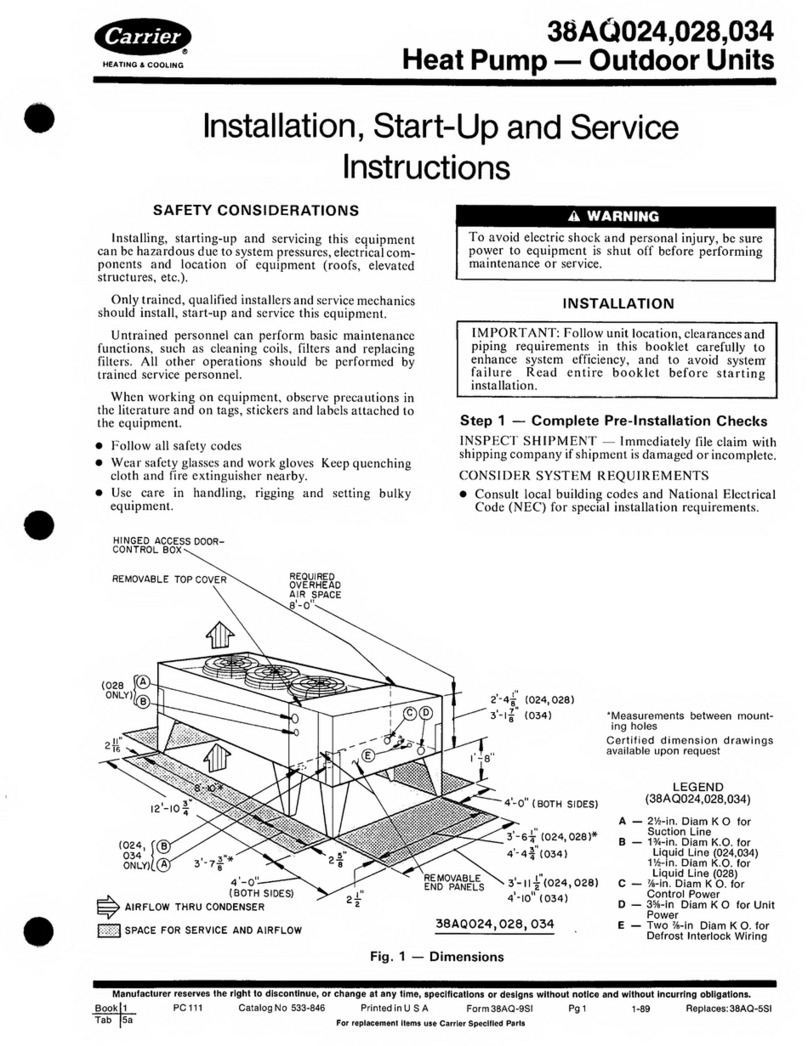
Carrier
Carrier 3BAU024 Installation, Start-Up and Service Instructions
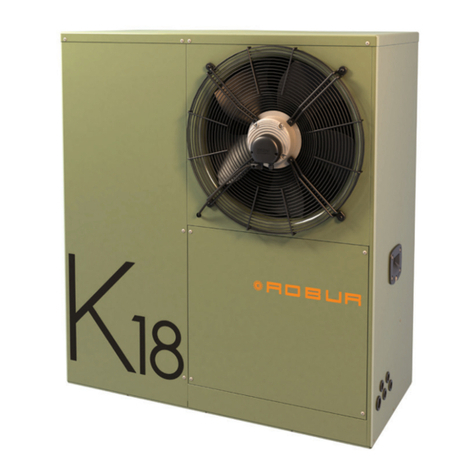
Robur
Robur K18 Simplygas Installation, use and maintenance manual


